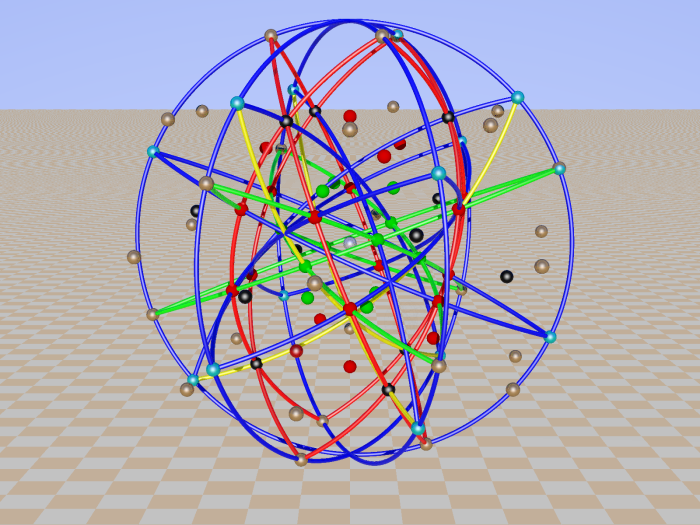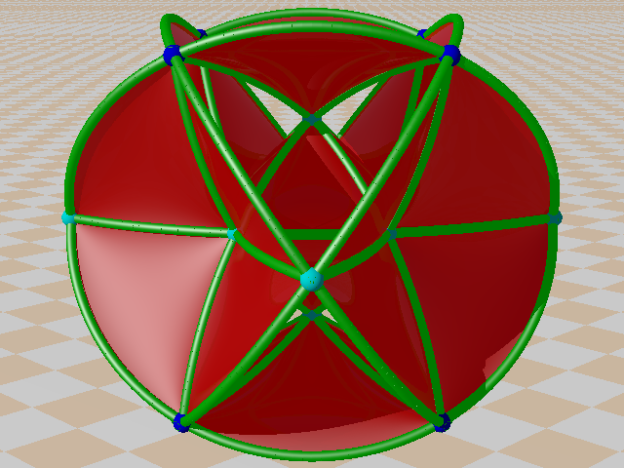The points, lines and planes of a projective space can be transformed in points, lines and planes of a elliptic space by choosing a metric. A possible model for such a space is the 3-sphere where pairs of antipodal points are the elliptic points, lines are great circles and planes are 2-spheres. The result for the GQ(2,2) is below.
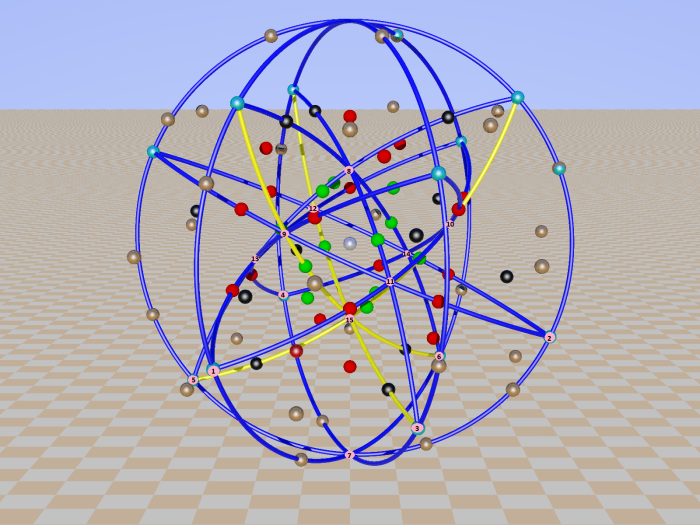
The numbering is equal to the GQ at the page about this GQ (paragraph 4 of PG(3,2) ).
The tetrahedron with green edges [ 1 2 3], [ 2 4 6], [1 4 5], [1 8 9], [4 8 12] and [2 8 10] is perhaps helpful to see this.
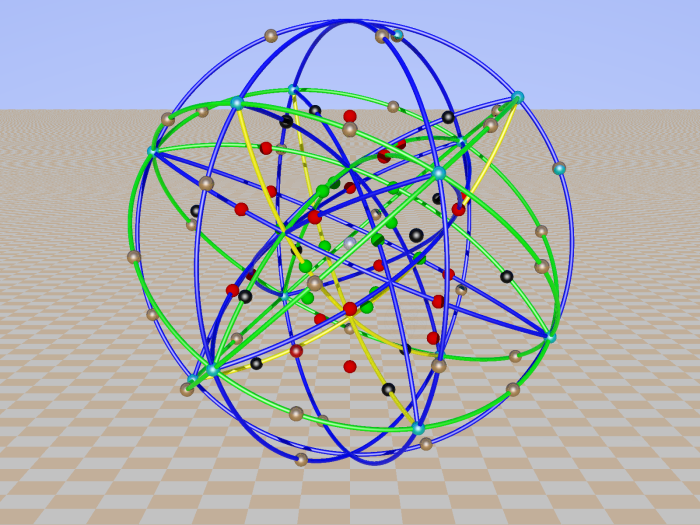
The plane [1 2 3 4 5 6 7] is the outer sphere (radius 1) with 3 blue meridians incident with point [7]. Only on this sphere is each point pair visible. The other circles are drawn within the sphere with radius 1, so the points outside this sphere are invisible. The sphere with radius 1 becomes the plane at infinity on returning to the projective geometry. The four perpendiculars from vertices [1], [2], [4] and [8] to the oppsite planes complete the 25 straight lines of PG(3,2).
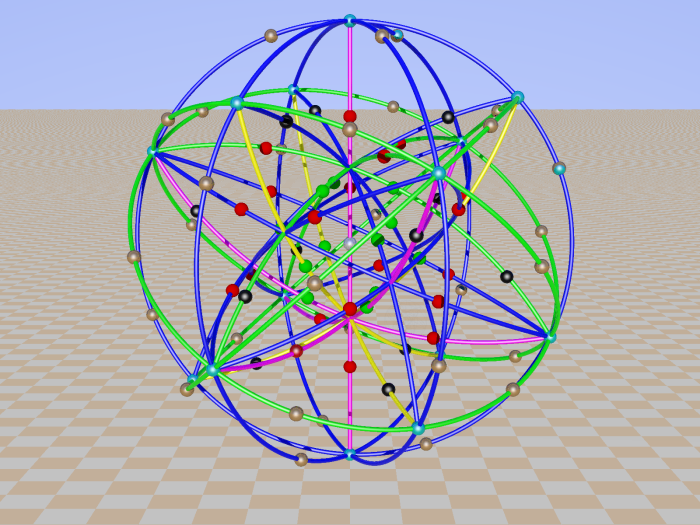
The affine situation of the GQ-page is recovered by double rotation in the 3-sphere or a projective transformation in the projective space.
The points that are drawn seem to be rather chaotic and random, but they actually are vertices of a 600-cell whose vertices lie on the 3-sphere. Twelve green vertices of a icosahedron, 20 red vertices of a dodecahedron, 12 black vertices of a icosahedron again and 30 golden vertices of a icosidodecahedron. The 120 vertices of a 600-cell are counted as 2×12 of 2 icosahedra, 2×20 vertices of 2 dodecahedra, another 2×12 vertices of 2 icosahedra and 30 vertices of the icosidodecahedron and the 2 poles of which one is visible in the centre of the 2-sphere.
A double 6 configuration can be added:

The points of intersection are vertices of the 600-cell. These are 6 green ones of the icosahedron, 12 red ones of the dodecahedron, 6 black ones of a icosahedron and 6 (double) ones of the icosidodecahedron.
The 15 and 12 lines together are the 27 lines of a GQ(4,2).
